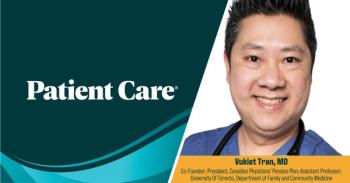
9/11 Rescuers At Risk for Sarcoidosis
NEW YORK -- World Trade Center rescue workers exposed to airborne debris in the aftermath of the Sept. 11, 2001, attacks are at an increased risk for pulmonary sarcoidosis or a related disorder, investigators here have found.
NEW YORK, May 9 -- World Trade Center rescue workers exposed to airborne debris in the immediate aftermath of the Sept. 11, 2001, attacks are at an increased risk for pulmonary sarcoidosis or a related disorder, investigators here have found.
Twenty-six New York City firefighters and emergency medical service workers who were at ground zero have since developed evidence of a sarcoid-like granulomatous pulmonary disease, reported David J. Prezant, M.D., of the Fire Department of New York, and colleagues, in the May issue of Chest.
The condition, which the investigators call World Trade Center sarcoid-like granulomatous pulmonary disease, consists of abnormalities in the pulmonary parenchyma, hilar and/or mediastinal adenopathies, clinical features resembling asthma, and, in some cases, involvement of extrathoracic sites, such as the bones, joints, skin, or spleen.
The investigators had previously shown that even before 9/11, New York City firefighters and rescue personnel had an elevated incidence of sarcoidosis or sarcoid-like granulomatous disease. The conditions are linked to occupational or environmental exposures to organic dusts, metals, chemical dust, silica, and wood dust or smoke.
"We report here that the incidence of sarcoidosis or sarcoid-like granulomatous pulmonary disease among Fire Department of New York World Trade Center rescue workers (firefighters and EMS workers) was significantly increased when compared to the years before World Trade Center dust exposure," the investigators wrote. "This was especially true during the first 12 months after World Trade Center dust exposure."
To determine whether prolonged, repeated exposure to airborne particulates might increase the risk of sarcoidosis or sarcoid-like granulomatous pulmonary disease in a population already at risk, the investigators followed fire department employees who were enrolled in a monitoring program.
Those who had chest radiograph findings suggestive of sarcoidosis underwent additional evaluation, including chest CT imaging, pulmonary function tests, airway challenge tests, and biopsies.
The investigators calculated an annual incidence rate of sarcoidosis or the sarcoid-like condition and compared it with the 15 years before the World Trade Center attacks.
They found that 26 patients, all at the World Trade Center site within 72 hours of the collapse of the towers, when particulate levels were highest, had pathologic evidence consistent with new-onset sarcoidosis. All patients had intrathoracic adenopathy, and six (23%) had extrathoracic disease, involving the spleen, abdominal and pelvic lymph nodes, bones, joints, skin, and, in one case, hematuria.
Half the patients were identified within a year of their first exposure to the site debris, translating into an annual incidence rate of 86 per 100,000. The remaining 13 patients were identified with sarcoidosis or the sarcoid-like granulomatosis in the second through fifth years following the disaster, an annual incidence rate of 22 per 100,000.
In contrast, the average annual incidence rate of sarcoidosis among firefighters during the 15 years before the World Trade Center attacks was 15/100,000, and among controls (rescue personnel without exposure to fire conditions) the rate was 12.9/100,000.
Eighteen of the 26 patients (69%) had findings that were consistent with asthma, and fifteen of these patients had clinical symptoms: cough, dyspnea, and/or wheeze exacerbated by exercise and/or irritant exposure, or improved by the use of bronchodilators.
Of the 21 patients who agreed to undergo a provocative airway challenge with methacholine or cold-air exercise, eight had evidence of airway hyperreactivity, which had not been seen among fire department personnel with sarcoidosis before 2001.
"This new information about the early onset of World Trade Center sarcoid-like granulomatous pulmonary disease and its association with asthma/airway hyperreactivity has important public health consequences for disease prevention, early detection, and treatment following environmental -occupational exposures," the authors wrote.
Newsletter
Enhance your clinical practice with the Patient Care newsletter, offering the latest evidence-based guidelines, diagnostic insights, and treatment strategies for primary care physicians.































































































































































































































































































































